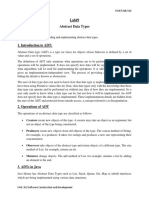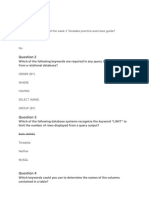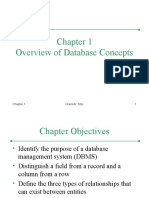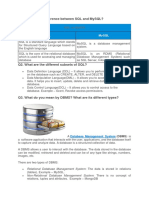0% found this document useful (0 votes)
39 views19 pagesUnit6-1 (Abstract Data Types)
The document discusses abstract data types and data structures. It introduces common data structures like lists, stacks, queues, trees, and graphs. It also discusses analyzing the efficiency of algorithms and comparing different data structure implementations. Sample problems on finding shortest paths and implementing a data dictionary are provided. Implementation of an array-based bag data structure is demonstrated.
Uploaded by
AbadCopyright
© © All Rights Reserved
We take content rights seriously. If you suspect this is your content, claim it here.
Available Formats
Download as PDF, TXT or read online on Scribd
0% found this document useful (0 votes)
39 views19 pagesUnit6-1 (Abstract Data Types)
The document discusses abstract data types and data structures. It introduces common data structures like lists, stacks, queues, trees, and graphs. It also discusses analyzing the efficiency of algorithms and comparing different data structure implementations. Sample problems on finding shortest paths and implementing a data dictionary are provided. Implementation of an array-based bag data structure is demonstrated.
Uploaded by
AbadCopyright
© © All Rights Reserved
We take content rights seriously. If you suspect this is your content, claim it here.
Available Formats
Download as PDF, TXT or read online on Scribd
/ 19










































































































